by Walt Anderson
I’ve always been fascinated by hedgehogs, but since the mammal is not native to Arizona, I can’t write a column on them. So I decided to get Cereus—Echinocereus, that is—the spiny hedgehog cacti that are found in various species all over the state.
A rose by any name . . . well, cacti are indeed close relatives of roses, and that surely accounts for the gorgeous flowers. When outsiders (non-Arizonans) think of cacti, they often think of just four elements—the Grand Canyon, sand, sun, and cacti. Arizona promotes itself as the state of five C’s: Copper, Cattle, Cotton, Citrus and Climate. Should probably add Cacti.
Cacti are incredibly diverse, from tiny pincushions to pudgy barrels to flat-padded prickly pears to bristly chollas to giant saguaros. There are wonderful collections of these New World beauties in botanical collections in Phoenix and Tucson, as well as roadside and on-line nurseries. If planted within temperature-appropriate zones, they are attractive, low-maintenance water misers that are far better than the thirsty lawns and exotic flowers that so many people consider “landscaping.” Look at most Arizona landscapes, and you will find native plants designed to conserve water and tolerate drought. We should design accordingly.
Hedgehogs are starting to bloom now, so let’s look at a few to see what they can tell us.
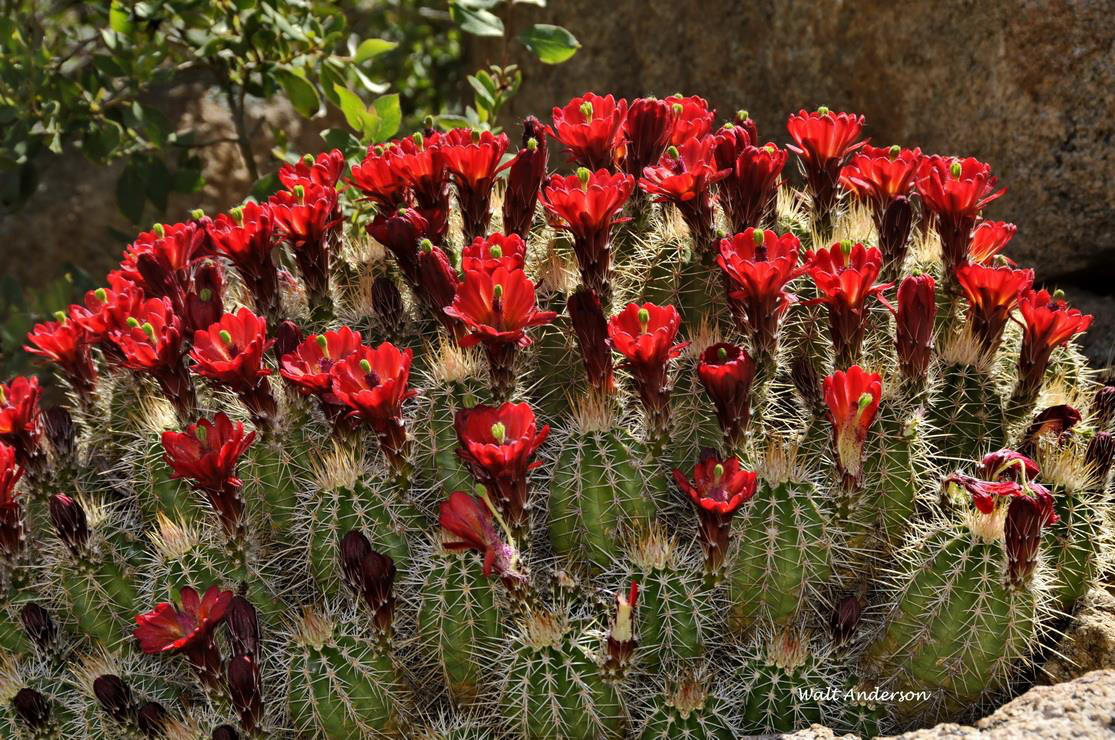
Claret Cups are among my favorites, as they produce a rounded colony or cluster of cylindrical stems that can produce hundreds of brilliant blossoms. Unlike most cactus flowers, these blossoms persist for up to a week. There are actually two species differing only by chromosome number (and I never count those when I am in the field). In northern Arizona, there is the King-cup, E. triglochidiatus, while SE Arizona to west of Sasabe has the Scarlet, E. coccineus. Most people call them all Claret-cup.
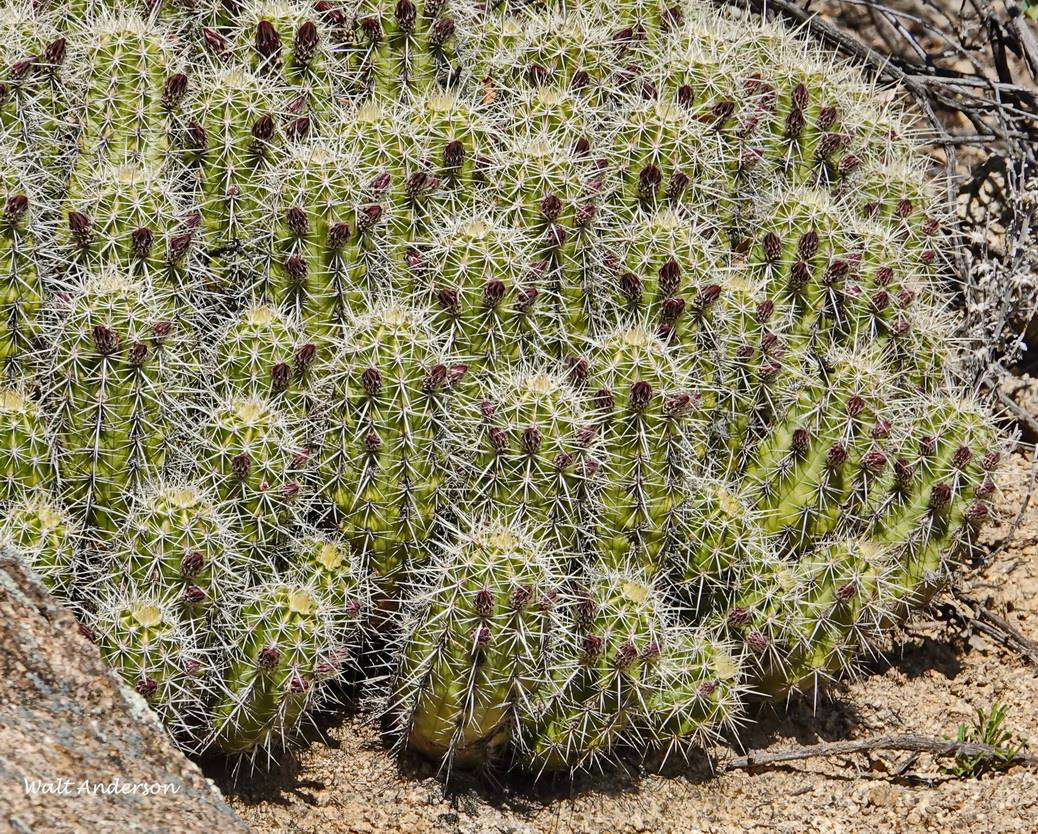
I’m astonished often by the Claret-cup’s ability to live in the meagerest of soils, often just gravel or sometimes little more than a crack in a rock. Their shallow roots take up water quickly when it’s available, but then they have to hold on to it in their tissues to survive the dry times. They have an effective form of photosynthesis called Crassulacean Acid Metabolism (CAM) that allows them to minimize water loss. Waxy coatings on their exteriors and abundant spines that reduce airflow over the surface both help reduce evapotranspiration. We automatically think the spines are defensive, but that may actually be less important than thermoregulation. When spring comes, these cacti produce flower buds abundantly.
●●●
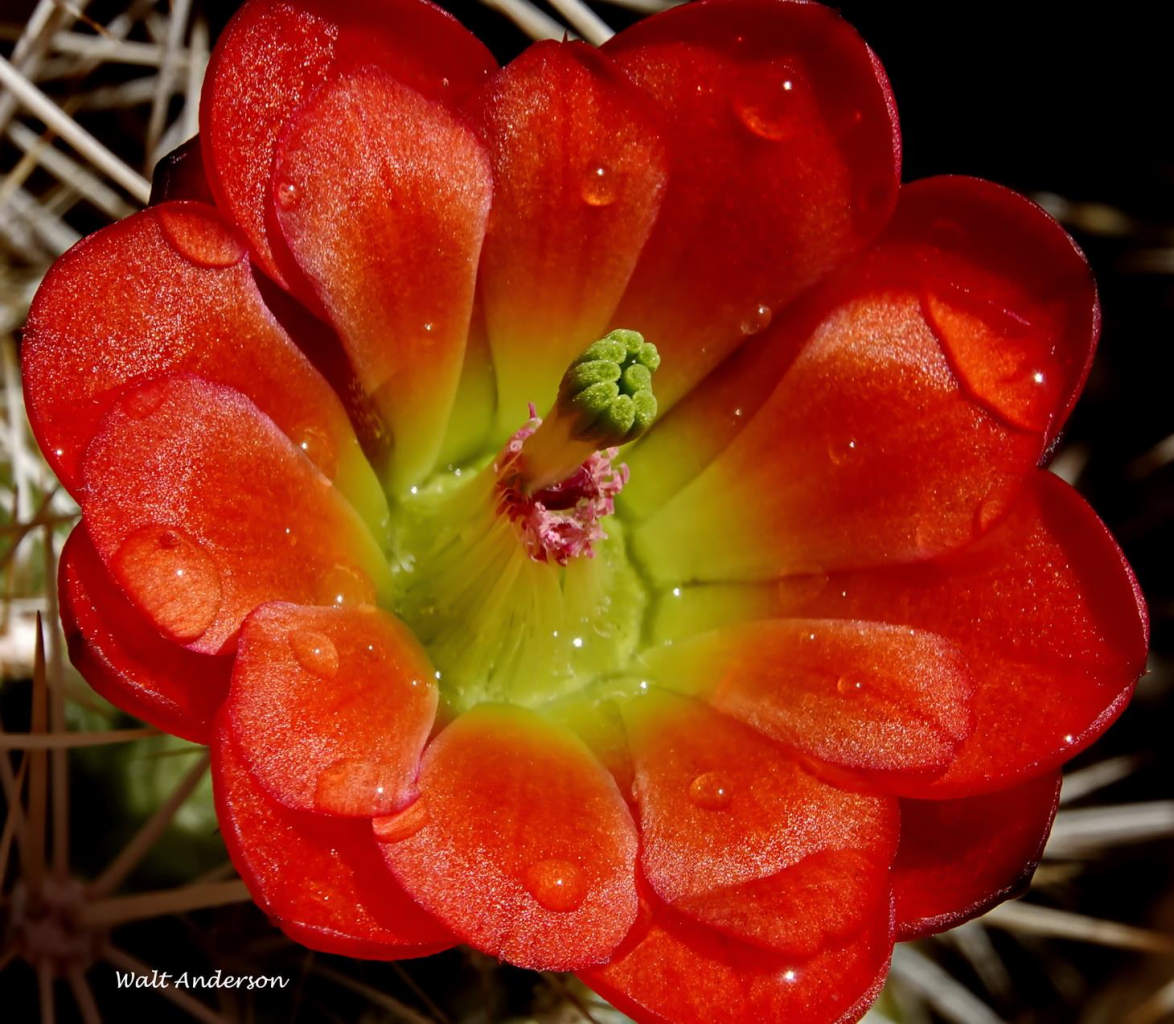
Notice here that the petals cause water to bead up because of their waxy coating.
●●●
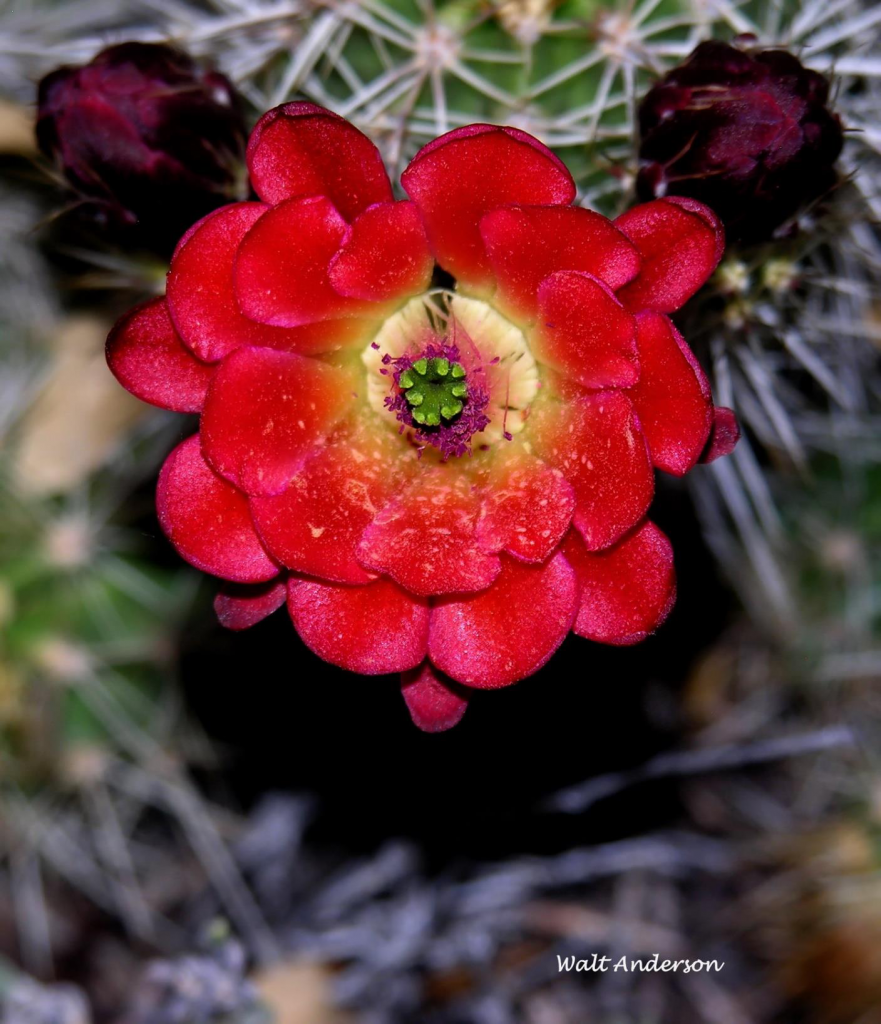
The primary function of a flower is sexual reproduction through the process of pollination. Secondary functions to achieve that end are for the flower to serve as target, provide reward, and filter out unwanted visitors. The target here is obvious—a crown of brilliant petals surrounding the pistil whose green stigma leads down through the style to the ovary below. Nectaries provide the reward, and the numerous stamens surrounding the pistil provide the pollen that the visiting agent carries off to the next flower. In this era of increasing cultural sensitivity, please remember not to stigmatize a plant for its style.
●●●
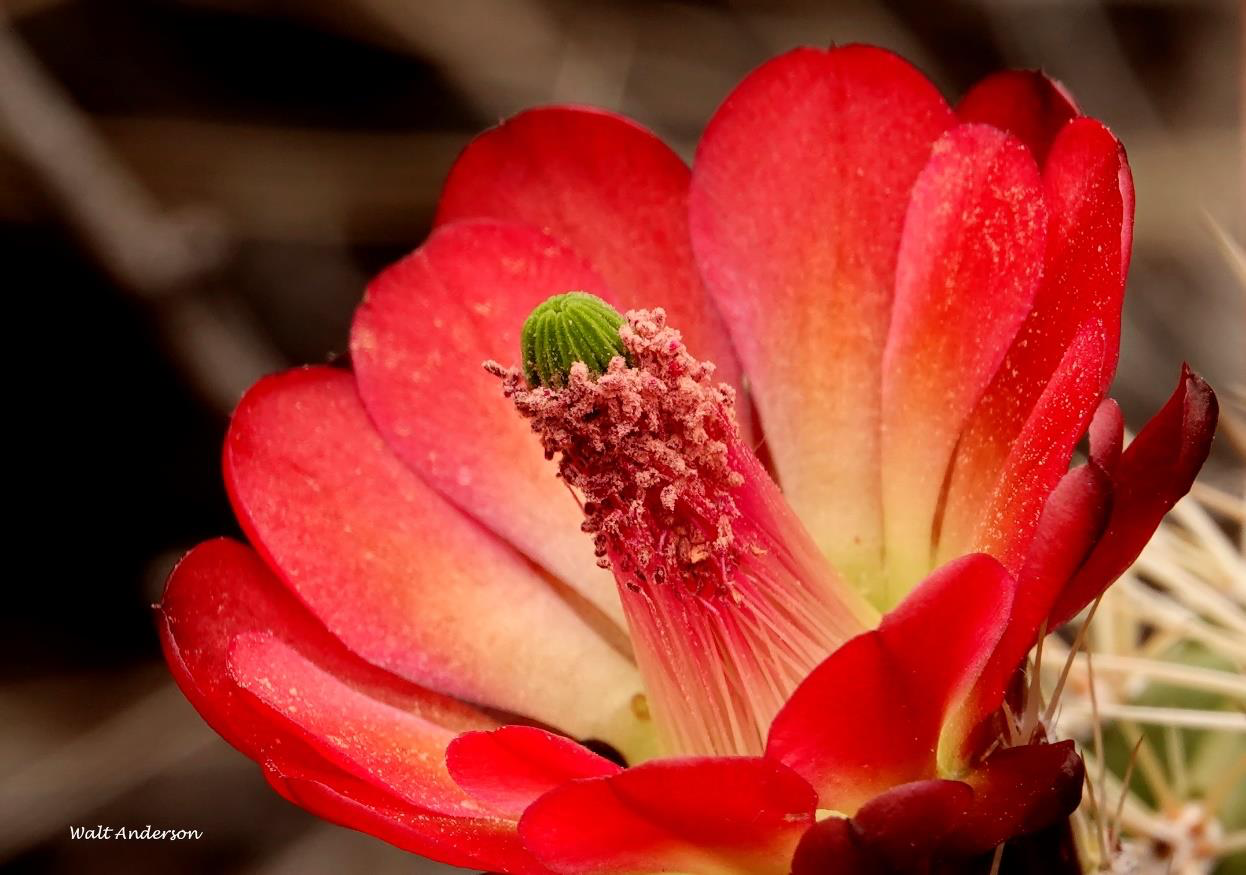
Here’s a different view of the Claret-cup stamens filled with pollen appressed against the pistil.
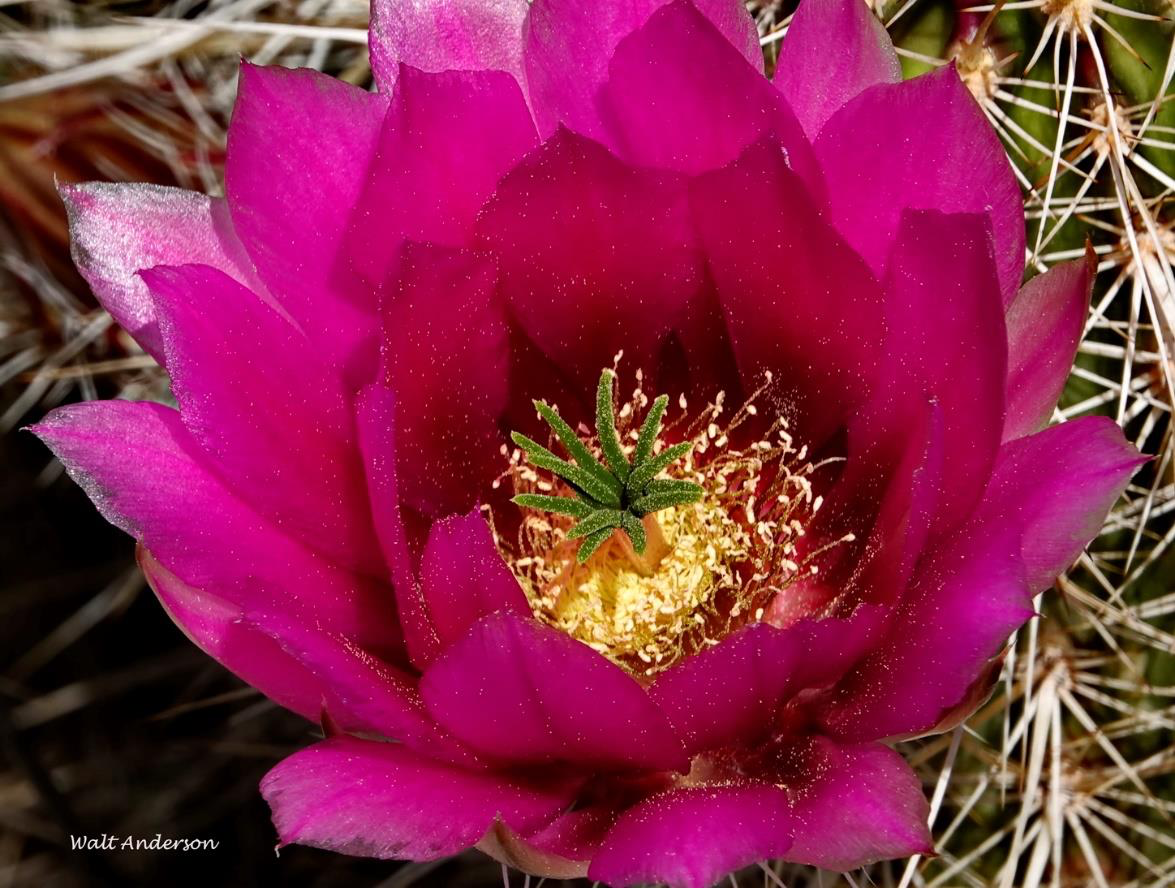
Compare that to the floral arrangement of the related Englemann’s Hedgehog, where the stamens are well below the octopus-like stigma.
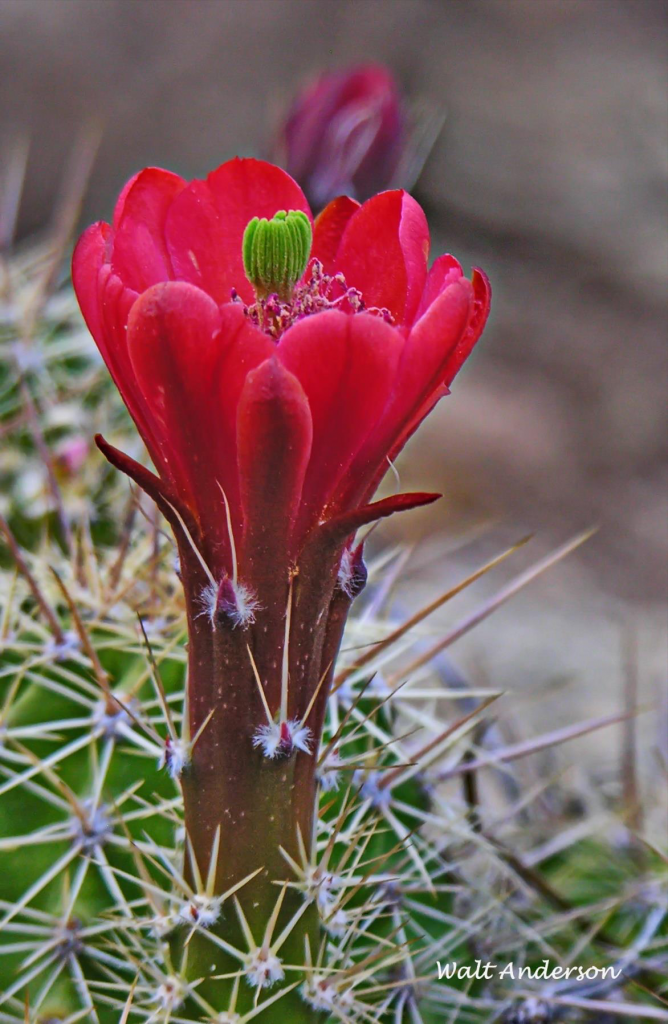
It’s pretty clear that both the target and the filter (all the spines that discourage climbing from below) are designed for aerial visitors.
●●●
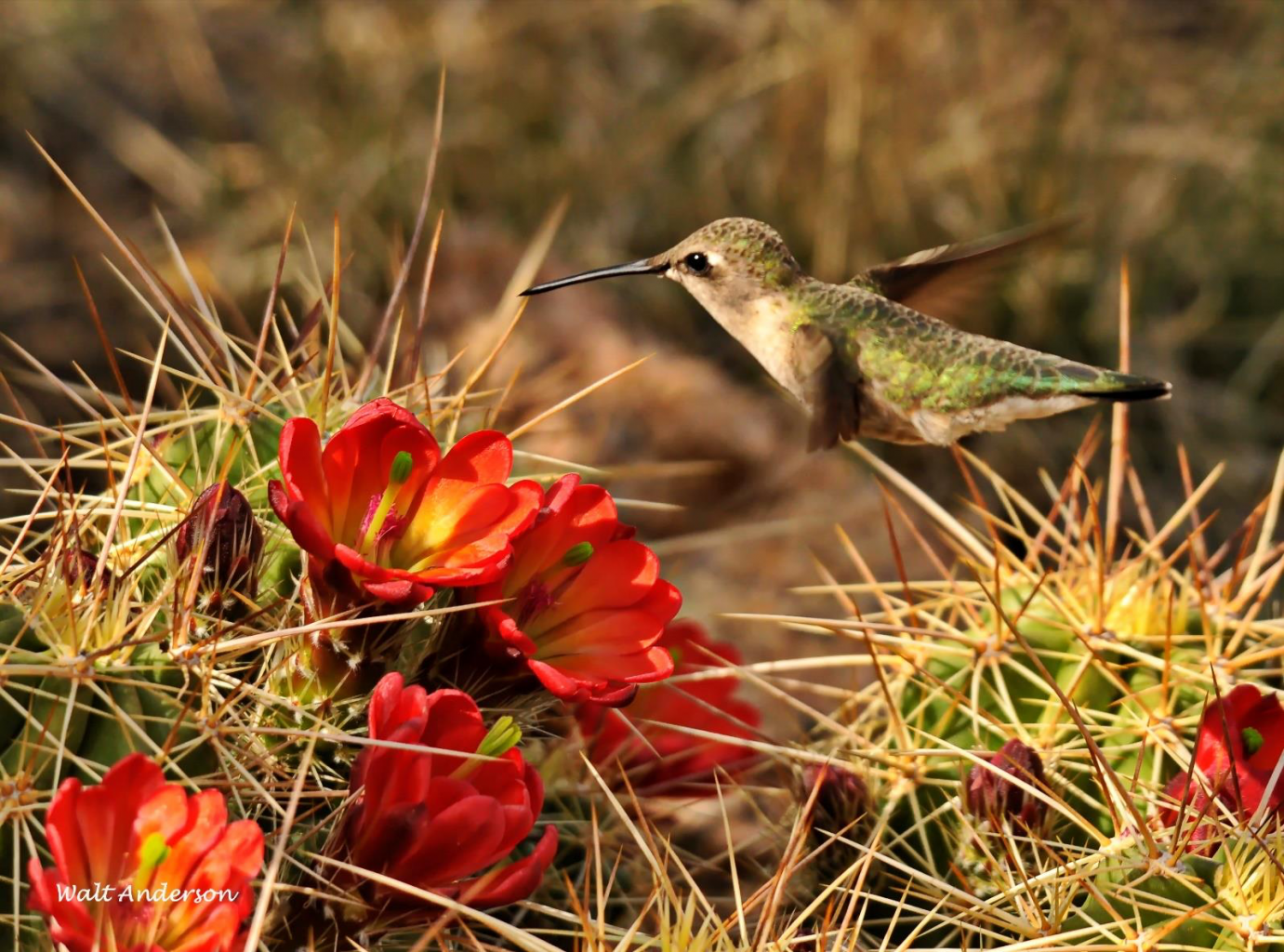
A female Black-chinned Hummingbird is a natural pollination vector, attracted to the stunning reddish-orange flowers (impact magnified by the abundance of flowers in a cluster) and rewarded with sweet nectar. Pollen is carried to other flowers to complete the reproductive process.
Many people would speak of this as symbiosis, implying that both parties benefit. However, “symbiosis” means “living together,” so this is a non-symbiotic mutualism—both benefit, but they don’t cohabit. Symbiosis is not necessarily a good thing for both parties, as parasitism is a symbiosis too (recall that some science fiction stories have a person carrying an internal symbiont that often makes decisions for its own benefit). That seems creepy, but, in fact, humans are crawling with symbionts, some useful (mutualistic) and some not (parasitic). Lesson: do not confuse “symbiosis” with mutualism.
●●●
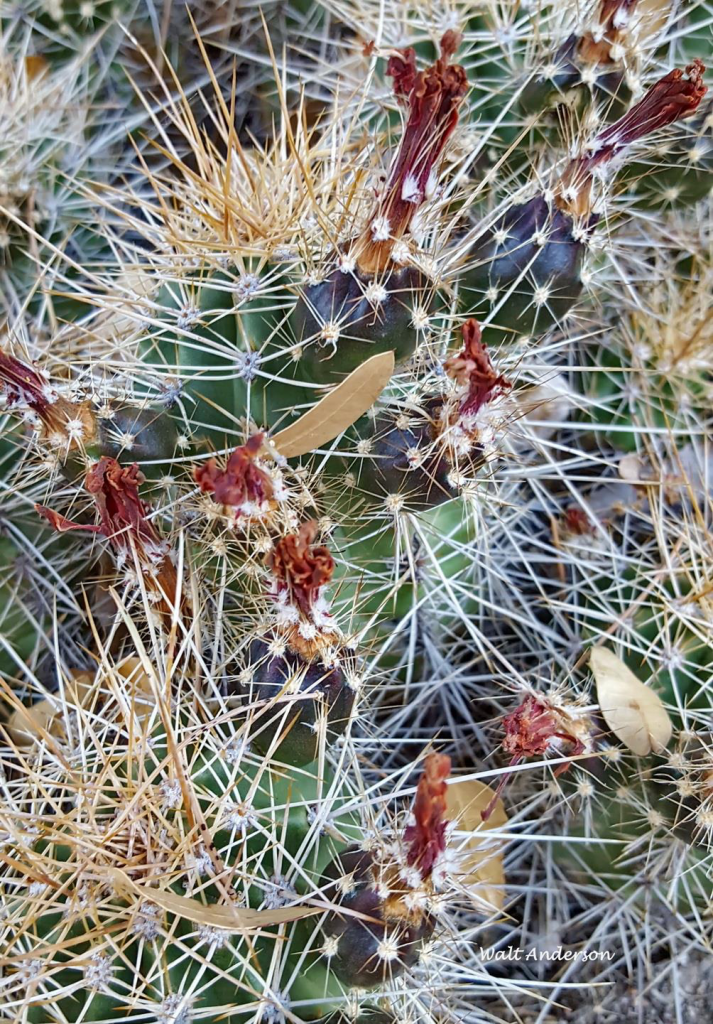
Claret-cup fruits are small and armored with nasty spines while developing, but when mature, the spines fall off, and the fruit is sweet and edible, rewarding the dispersers of its many tiny blackish seeds. Using spines to hold off devouring critters is a cactus’s alternative to the common fruiting strategy of sourness or bitterness in an unripe fruit that assures that it won’t be eaten until sugars develop and the seeds are ready to be dispersed. Mother Nature—you’re the best!
●●●
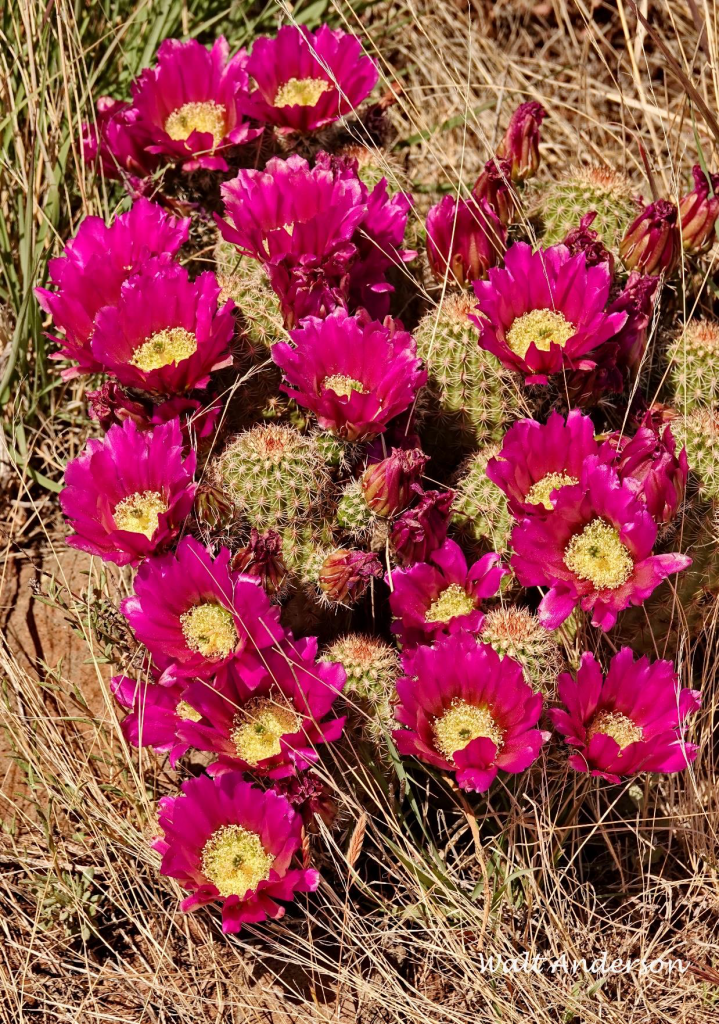
The rarest hedgehog in Arizona is Echinocereus bonkerae, the Bonker’s Hedgehog, which is very limited in its range in central Arizona. Notice the very short spines and the deep crimson blossoms. Hedgehog taxonomy is challenging, as outer form can vary a lot, and there can be hybrids. Sometimes trying to identify them can drive you bonkers.
●●●
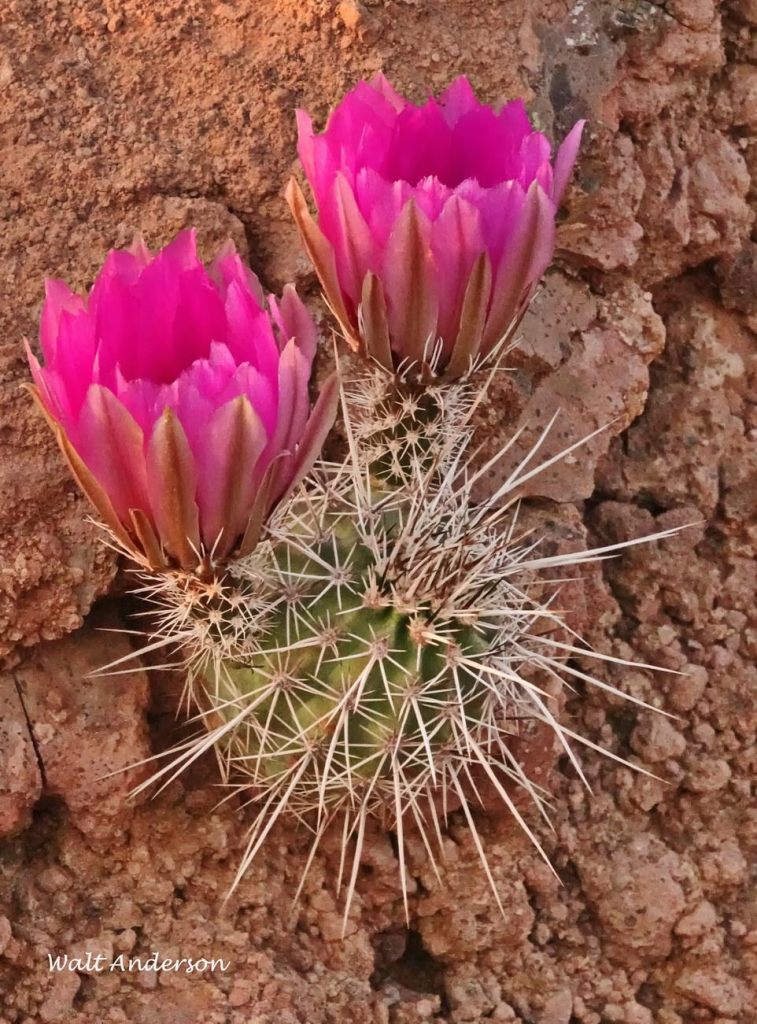
Finally, this lovely Englemann’s Hedgehog shows how even a small cactus can pull out all the stops when it flowers—a tremendous allocation of resources in the service of sex. I urge you to filter out the distractions of your electronic devices and focus on the wonders of the natural world around you. Cacti are truly miraculous plants, and you should collect the emotional reward that is just waiting for your attention.
